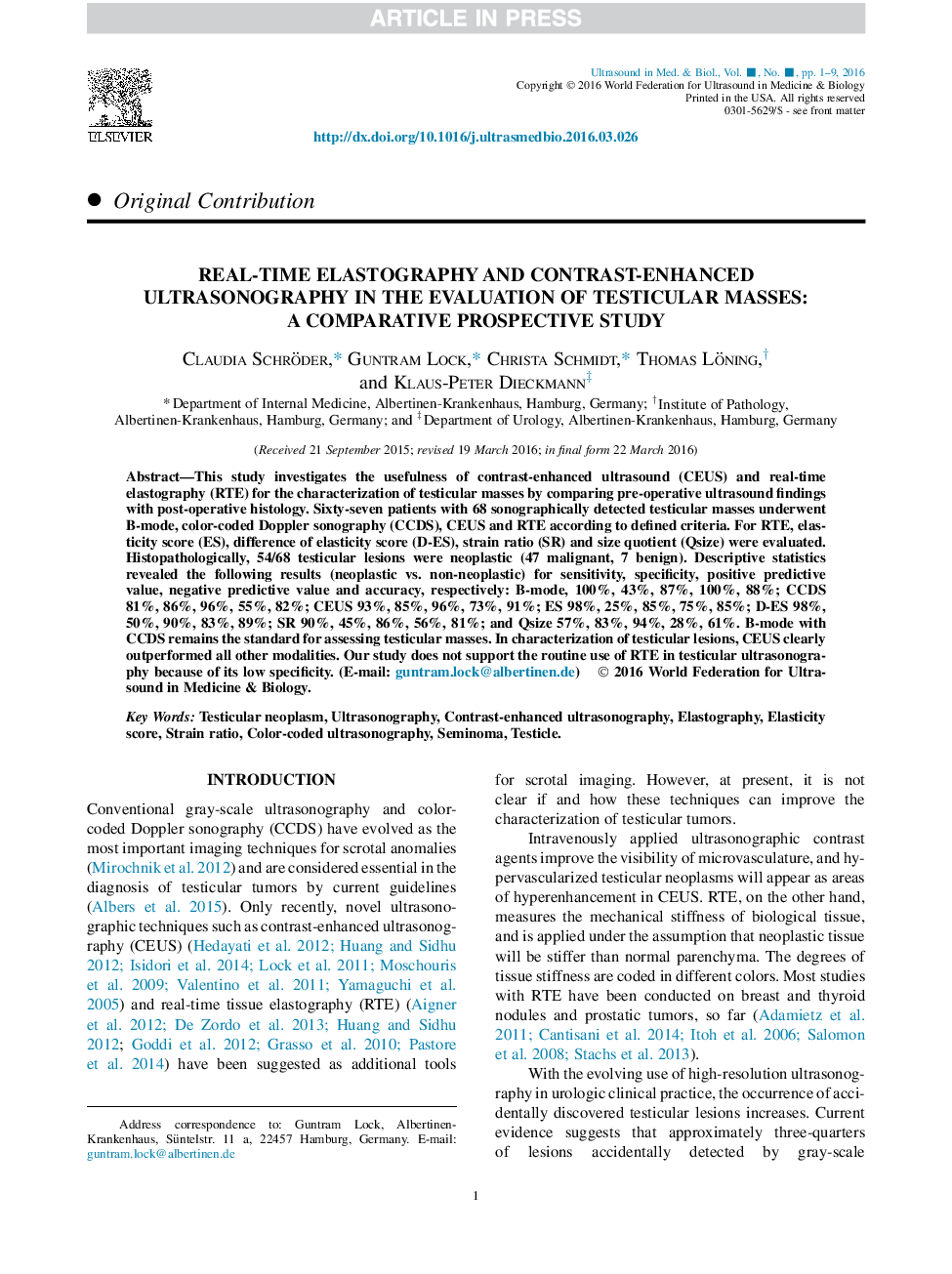| Article ID | Journal | Published Year | Pages | File Type |
|---|---|---|---|---|
| 1760174 | Ultrasound in Medicine & Biology | 2016 | 9 Pages |
Abstract
This study investigates the usefulness of contrast-enhanced ultrasound (CEUS) and real-time elastography (RTE) for the characterization of testicular masses by comparing pre-operative ultrasound findings with post-operative histology. Sixty-seven patients with 68 sonographically detected testicular masses underwent B-mode, color-coded Doppler sonography (CCDS), CEUS and RTE according to defined criteria. For RTE, elasticity score (ES), difference of elasticity score (D-ES), strain ratio (SR) and size quotient (Qsize) were evaluated. Histopathologically, 54/68 testicular lesions were neoplastic (47 malignant, 7 benign). Descriptive statistics revealed the following results (neoplastic vs. non-neoplastic) for sensitivity, specificity, positive predictive value, negative predictive value and accuracy, respectively: B-mode, 100%, 43%, 87%, 100%, 88%; CCDS 81%, 86%, 96%, 55%, 82%; CEUS 93%, 85%, 96%, 73%, 91%; ES 98%, 25%, 85%, 75%, 85%; D-ES 98%, 50%, 90%, 83%, 89%; SR 90%, 45%, 86%, 56%, 81%; and Qsize 57%, 83%, 94%, 28%, 61%. B-mode with CCDS remains the standard for assessing testicular masses. In characterization of testicular lesions, CEUS clearly outperformed all other modalities. Our study does not support the routine use of RTE in testicular ultrasonography because of its low specificity.
Keywords
Related Topics
Physical Sciences and Engineering
Physics and Astronomy
Acoustics and Ultrasonics
Authors
Claudia Schröder, Guntram Lock, Christa Schmidt, Thomas Löning, Klaus-Peter Dieckmann,
